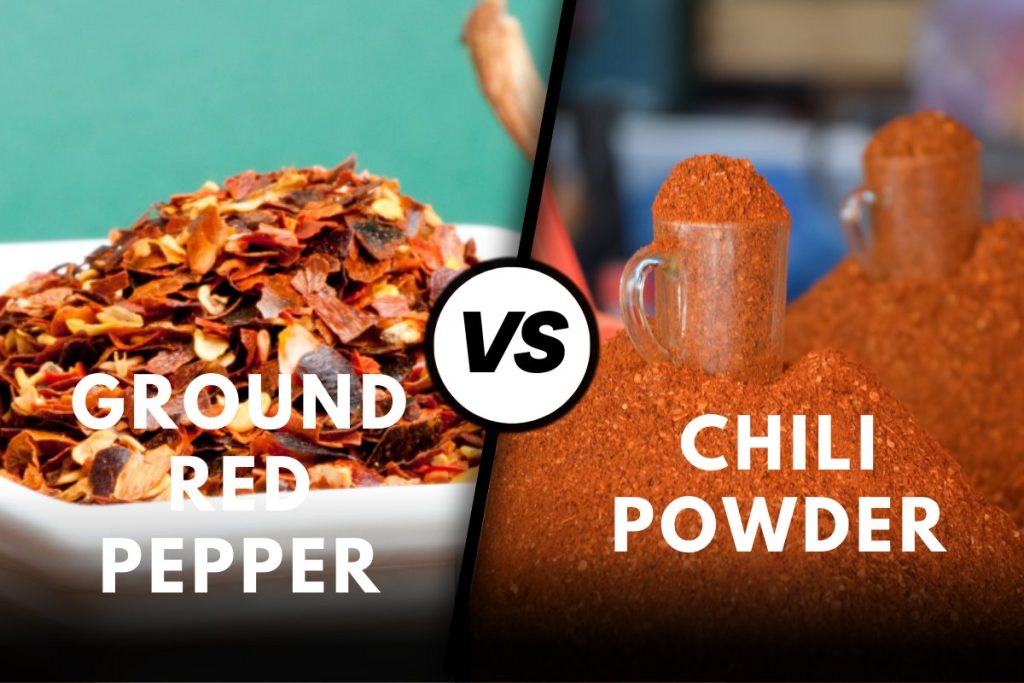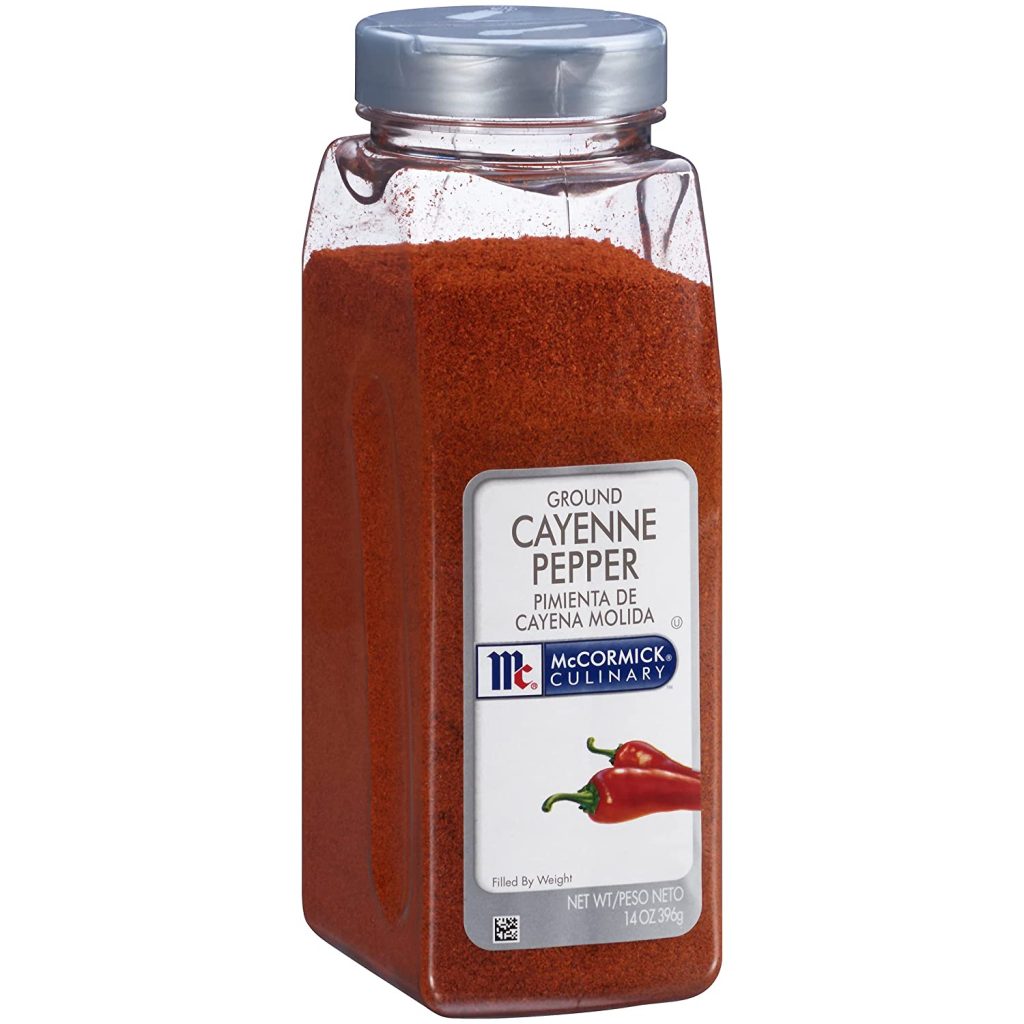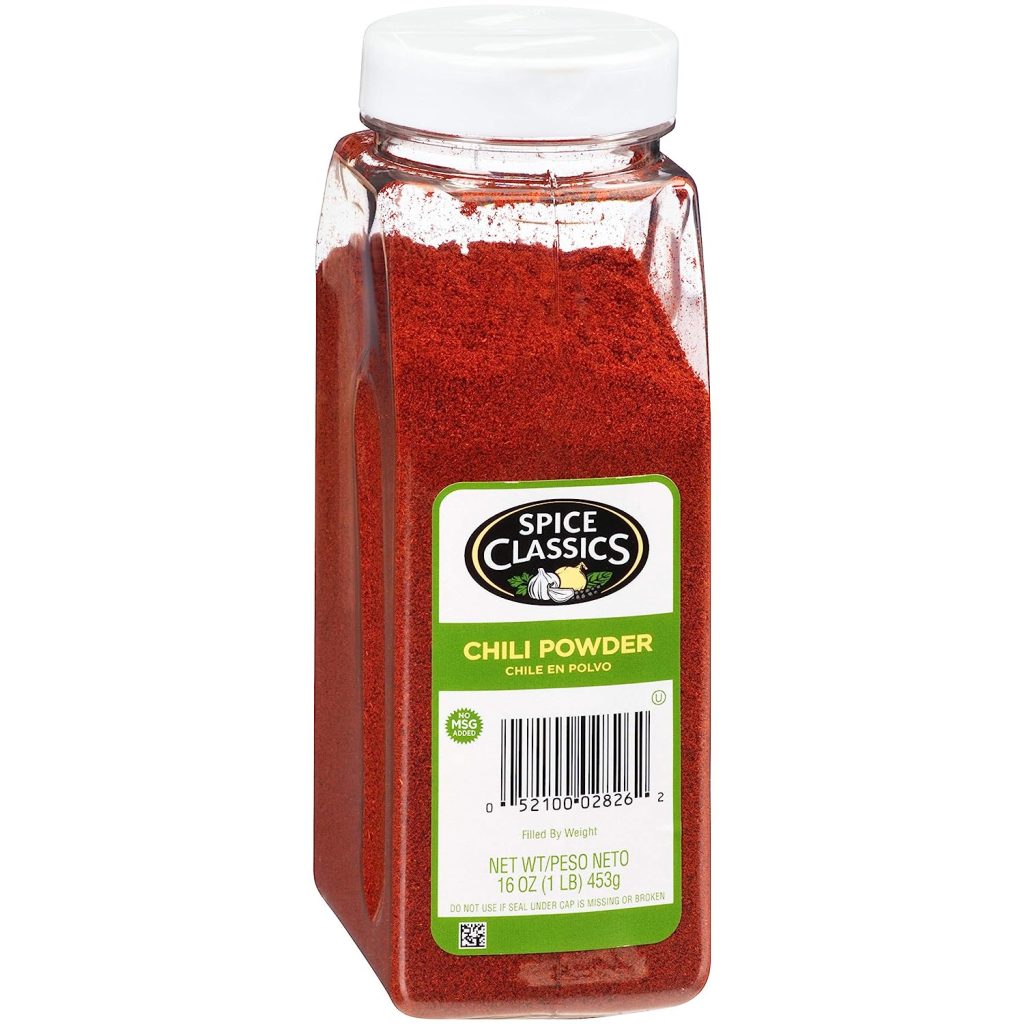If you’re a fan of spicy food, you’ve probably used both ground red pepper and chili powder in your cooking.
But do you know the difference between the two? While they may seem similar, there are actually some key differences that can impact the flavor and heat level of your dishes.
Ground Red Pepper vs Chili Powder
Ground red pepper and chili powder are two different spice blends commonly used in cooking. Ground red pepper is usually made from dried, red cayenne peppers and is generally hotter than chili powder. Chili powder is a blend of several different spices, including cumin, garlic powder, oregano, and paprika.
Read on to explore a detailed comparison between ground red pepper and chili powder.

See Also: Korean Chili Powder Vs Paprika
Ground Red Pepper vs Chili Powder – Details
The two ingredients are both spices that are used in many dishes. Chili powder is used in chili, while red pepper is used in many dishes, such as salsa and chili.
When to Use Ground Red Pepper?

If you want to add a lot of heat to a dish, ground red pepper is a good choice. It’s very concentrated, so a little goes a long way.
It’s also a good option for dishes where you want a consistent level of heat since it’s easy to measure and control.
Some examples of dishes where you might use ground red pepper include:
- Soups and stews: A pinch of ground red pepper can add some heat and depth of flavor to a broth-based soup or stew.
- Dry rubs for grilled meats: Mixing ground red pepper with other spices can create a flavorful and spicy rub for grilled chicken, pork, or beef.
- Hot sauces: Ground red pepper is a key ingredient in many hot sauces, as it adds a lot of heat and a sharp, spicy flavor.
When to Use Chili Powder?

Chili powder is a good choice for dishes where you want a more complex, well-rounded flavor.
Since it’s made from a blend of spices, it can add depth and complexity to a dish, as well as some heat.
Some examples of dishes where you might use chili powder include:
- Chili: Chili powder is a key ingredient in many chili recipes, as it adds flavor and a moderate level of heat.
- Tacos: Sprinkling chili powder over grilled meats or vegetables can add flavor and a slight kick to tacos.
- Southwestern dishes: Chili powder is often used in dishes like enchiladas, burritos, and fajitas to add flavor and a slight level of heat.
- Barbecue sauce: Mixing chili powder with other spices can create a flavorful and slightly spicy barbecue sauce for grilled meats.
Substituting One for the Other
If you find yourself in a pinch and don’t have the specific spice you need for a recipe, you may be wondering if you can substitute one for the other.
In general, you can use ground red pepper as a substitute for chili powder, but not the other way around.
Since chili powder is made from a blend of spices, it’s not as concentrated as ground red pepper.
If you try to use chili powder in place of ground red pepper, you may end up with a dish that has too much flavor and not enough heat.
On the other hand, if you need chili powder and only have ground red pepper, you can use it as a substitute, but you may need to adjust the amount.
Since ground red pepper is more concentrated, you’ll need to use less of it to get the same level of heat as chili powder.
Conclusion
Ground Red Pepper and Chili Powder are two spices that share some similarities but also have very distinct differences.
They may look similar and have similar flavor profiles, but their heat levels, uses, and origins are quite different.
Whether you’re picking up one or the other, understanding their differences can help you to create a dish that’s full of flavor and just the right amount of heat.
With Ground Red Pepper and Chili Powder, you can create a dish that’s sure to please. I hope this blog post is helpful for you in understanding Ground Red Pepper vs Chili Powder.
Read Also: How to Make Chili Pepper Oil?
I am an accomplished tech writer with a passion for simplifying complex technology concepts. With a background in Tech, James has dedicated their career to making the intricacies of the digital world accessible to a broad audience.








